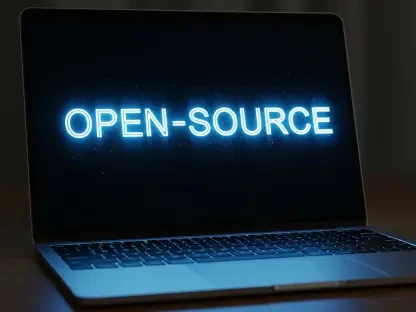The recent CrowdStrike outage caused by a content configuration update that affected approximately 8.5 million Windows devices has served as a sobering reminder of the vulnerabilities inherent in modern digital systems. This incident has sparked urgent discussions about how to prevent similar disruptions in the future. By leveraging artificial intelligence (AI) and implementing rigorous testing and governance practices, we can bolster system integrity and reliability.
The Importance of Robust Governance and Testing
Systematic Approach to Governance
In today’s rapidly evolving digital landscape, modern systems demand a comprehensive governance framework that ensures both quality and security. This comprehensive framework entails employing advanced security testing methods such as threat modeling alongside established practices like root cause analysis. By applying a systematic approach, organizations can proactively identify potential vulnerabilities before they can be exploited by malicious entities.
The importance of such a governance framework cannot be overstated. Threat modeling allows organizations to visualize potential attack vectors and identify areas of weakness that need fortification. Meanwhile, root cause analysis plays a crucial role in understanding past failures, enabling teams to implement more durable solutions. This multifaceted approach ensures a more resilient digital environment where risk is minimized, and system integrity is maintained. Additionally, fostering an organizational culture that upholds these principles is essential for achieving long-term security and quality.
Advanced Security Testing Methods
Adopting advanced security testing methods such as threat modeling, penetration testing, and vulnerability assessments forms the bedrock of a secure digital ecosystem. These testing methodologies enable organizations to simulate potential attack vectors, thereby reinforcing their cybersecurity defenses. Regular and thorough testing provides an ongoing assessment of system resilience against evolving threats, ensuring that digital environments remain secure and stable.
Threat modeling involves a comprehensive review of potential threats, helping to identify and mitigate vulnerabilities before they can be exploited. Penetration testing, on the other hand, simulates real-world cyber-attacks, allowing teams to assess the effectiveness of their defenses. Vulnerability assessments provide a detailed evaluation of security weaknesses, offering a roadmap for enhancement. Together, these testing protocols collectively fortify systems against potential cyber threats, ensuring continuous reinforcement of security measures.
Accountability and Internal Audits
In the quest for maintaining high standards of system quality and security, it is crucial to hold all team members accountable. Regular evaluations and internal audits play a pivotal role in identifying gaps in compliance and security. These audits ensure that best practices are consistently adhered to, fostering a culture of accountability throughout the organization.
Internal audits, while sometimes viewed as cumbersome, are indispensable in identifying and addressing potential weaknesses within a system. By conducting these on a regular basis, organizations can maintain a high level of vigilance and ensure that all security measures are up-to-date and effective. Additionally, fostering a culture where team members are encouraged to take responsibility for system integrity can significantly mitigate the risk of outages and breaches. When everyone within the organization understands the critical importance of their role, the overall reliability and security of the system are greatly enhanced.
Root Cause Analysis and Continuous Improvement
Identifying Root Causes
Conducting a thorough root cause analysis after any incident is essential for understanding the underlying issues that led to the problem. This investigative process should focus on identifying system weaknesses rather than assigning blame to individuals. By concentrating on the actual root causes, organizations can develop robust solutions that address these vulnerabilities comprehensively.
Root cause analysis entails a meticulous examination of the factors that contributed to the failure, allowing teams to unravel the sequence of events leading up to the incident. This process often reveals hidden issues that may not have been apparent initially. By systematically identifying these root causes, organizations can implement corrective measures that directly target these identified weaknesses, thereby preventing similar incidents in the future. Ultimately, this approach fosters a more resilient and secure digital environment.
Implementing Corrective Actions
Once root causes have been identified, it is imperative to implement corrective actions promptly. Addressing the identified vulnerabilities not only resolves the immediate issue but also serves as a preventive measure against future incidents. Continuous improvement should be a core principle, driving the development of more resilient systems through regular updates and enhancements.
Implementing corrective actions involves a strategic approach that encompasses immediate fixes and long-term improvements. Immediate actions aim to resolve the current problem and restore system functionality, while long-term improvements focus on strengthening system defenses against similar vulnerabilities. This dual-focused approach ensures that organizations are not only reactive but also proactive in enhancing system resilience. Continuous improvement, characterized by regular assessments and updates, forms the foundation of a robust and secure digital ecosystem capable of withstanding evolving threats.
Fostering a Culture of Transparency
Encouraging open discussions about issues and challenges is crucial for effective problem-solving. A transparent culture, where team members feel empowered to identify and tackle root causes, helps build more reliable and user-centered software. This openness promotes collaboration and continuous learning within the organization, leading to more innovative and resilient solutions.
Transparency within an organization fosters an environment where team members can freely share their insights and concerns. This openness leads to a deeper understanding of potential issues and encourages collaborative problem-solving. When team members feel that their contributions are valued, they are more likely to actively engage in identifying and addressing root causes. Furthermore, a culture of transparency ensures that lessons learned from past incidents are shared organization-wide, promoting a collective effort toward continuous improvement and system resilience.
Integration of AI and Machine Learning
Benefits of AI and Machine Learning
AI and machine learning offer powerful tools for enhancing software development, testing, and deployment. These cutting-edge technologies can automate routine tasks, identify patterns, and predict potential issues before they impact the system. By leveraging these capabilities, organizations can enhance efficiency and preemptively address vulnerabilities, thereby ensuring a more stable and secure digital environment.
AI and machine learning enable organizations to process vast amounts of data swiftly, identifying patterns and anomalies that might go unnoticed through traditional methods. For instance, machine learning algorithms can analyze user behavior to detect unusual activities that could indicate a potential security threat. This proactive approach allows for early intervention, mitigating the impact of potential issues. Additionally, the automation of routine tasks frees up human resources, enabling teams to focus on more complex and strategic activities that require human expertise. This blend of technology and human intelligence forms a formidable defense against digital threats.
Limitations and Human Oversight
While AI and machine learning are invaluable, they should not replace human oversight in critical areas. The expertise and intuition of human engineers are crucial for ensuring that systems remain genuinely secure and reliable. A balanced approach, combining technological tools with human judgment, is essential for achieving optimal system performance and security.
Automated systems, while highly efficient, can sometimes miss nuances that a human might catch. For instance, AI algorithms might fail to recognize the context behind certain data patterns, leading to false positives or negatives. This limitation underscores the importance of human oversight. Engineers can provide the necessary context and judgment, ensuring that the system’s responses are appropriate and effective. By integrating human expertise with advanced technological tools, organizations can achieve a more holistic and reliable approach to system security and performance.
Enhancing Testing Standards
AI can play a significant role in improving testing standards by simulating a wide array of scenarios and stress-testing systems under various conditions. This comprehensive validation process ensures that potential issues are identified and addressed before they can affect the system. By using AI to augment traditional testing methods, organizations can achieve a more thorough and effective evaluation of system resilience.
Simulating different scenarios allows organizations to test system responses to a variety of conditions, ranging from routine operations to extreme stress situations. AI-driven simulations can uncover vulnerabilities that might not be apparent through manual testing alone. For instance, machine learning algorithms can create intricate test cases that challenge the system’s limits, revealing potential weaknesses. This approach ensures a more robust testing process, ultimately leading to a more resilient and reliable system. By continually refining testing standards through AI integration, organizations can stay ahead of potential threats and maintain high levels of system security and performance.
Compliance with Regulatory Frameworks
Understanding the EU AI Act
The EU AI Act aims to regulate AI applications to ensure their safety and robustness. Understanding and complying with such regulatory frameworks is crucial for driving improvements in testing standards and system validation. These regulations ensure that both individual components and entire systems are secure, fostering a more resilient digital environment.
Compliance with the EU AI Act involves adhering to stringent safety and robustness standards for AI applications. This regulatory framework mandates comprehensive testing and validation of AI systems to ensure they operate safely and effectively. Understanding the requirements of the EU AI Act enables organizations to implement best practices that enhance system security and performance. By aligning with these regulatory standards, organizations can demonstrate their commitment to maintaining high levels of system integrity, thereby gaining the trust of users and stakeholders.
Impact on Software Development
Adhering to regulatory requirements necessitates a rigorous approach to software development and testing. Ensuring compliance with these standards enhances system resilience, reducing the likelihood of outages and other disruptions. By incorporating regulatory guidelines into their development processes, organizations can strengthen their security and reliability, leading to more robust and dependable systems.
The impact of regulatory frameworks like the EU AI Act on software development is profound. Compliance demands meticulous attention to detail throughout the development lifecycle, from initial design to post-deployment maintenance. This rigorous approach ensures that every aspect of the system is designed with security and reliability in mind. By integrating compliance standards into development processes, organizations can mitigate risks associated with software vulnerabilities. This proactive approach not only reduces the likelihood of outages but also enhances user trust and satisfaction. Ultimately, adhering to regulatory requirements drives continuous improvement in software development, leading to more resilient and secure digital environments.
Comprehensive System Validation
Regulatory frameworks often require comprehensive validation of entire systems, as opposed to just individual components. This holistic approach ensures that all aspects of the system work seamlessly together, minimizing the risk of failures. By implementing thorough validation processes, organizations can identify and address potential issues before they escalate, thereby enhancing overall system resilience and reliability.
Comprehensive system validation involves an exhaustive evaluation of the system’s performance under various conditions. This includes testing the system’s functionality, security, and performance to ensure that it meets all regulatory standards. By validating the entire system, organizations can identify and rectify any weaknesses that might compromise its integrity. This holistic approach ensures that every component works harmoniously, providing a seamless user experience. Additionally, comprehensive validation helps in aligning with regulatory requirements, fostering a robust and trustworthy digital ecosystem. By prioritizing thorough system validation, organizations can ensure the long-term reliability and security of their digital environments.
Proactive Measures and Culture Development
Empowering Teams to Take Initiative
Teams should be encouraged to proactively identify potential issues and take corrective actions without waiting for problems to arise. This proactive mindset is crucial for developing systems that are robust and reliable. Empowering teams to take initiative fosters a culture of responsibility and innovation, driving continuous improvement in system security and performance.
Encouraging team members to proactively identify and address potential issues can significantly enhance system resilience. When teams are empowered to take the initiative, they are more likely to engage in innovative problem-solving and preventive measures. This proactive approach ensures that potential vulnerabilities are addressed before they can escalate into significant issues. Additionally, fostering a culture of responsibility and accountability motivates team members to prioritize system integrity and security. By enabling teams to take the initiative, organizations can cultivate a resilient and dynamic digital environment capable of adapting to evolving challenges.
Continuous Learning and Adaptation
The digital landscape is constantly evolving, and so too must our approaches to system security and reliability. Continuous learning and adaptation are essential for staying ahead of new threats and challenges. By prioritizing ongoing education and skill development, organizations can ensure that their teams are equipped to tackle emerging cybersecurity issues.
Continuous learning involves keeping abreast of the latest trends, technologies, and threats in the digital landscape. Regular training programs, workshops, and knowledge-sharing sessions can help teams stay updated on current best practices and emerging threats. This ongoing education equips team members with the skills and knowledge necessary to address new challenges effectively. Additionally, fostering a culture of continuous improvement encourages teams to adapt their strategies and approaches in response to evolving threats. By prioritizing continuous learning and adaptation, organizations can maintain a robust and secure digital environment, capable of withstanding new and emerging challenges.
Building a Collaborative Culture
The recent outage experienced by CrowdStrike, stemming from a content configuration update, has disrupted approximately 8.5 million Windows devices. This event underlines the inherent vulnerabilities in our modern digital ecosystems. As the digital realm becomes increasingly complex, incidents like this serve as stark reminders of the risks we face. This has sparked a flurry of urgent discussions among cybersecurity experts and IT professionals about strategies to avert similar disruptions in the future.
One of the more promising avenues is leveraging artificial intelligence (AI) to enhance system integrity and reliability. AI can help in early detection of configuration issues or other anomalies that could potentially lead to outages. Additionally, implementing stringent testing protocols before rolling out updates can catch problems early. Governance practices, such as regular audits and compliance checks, can further bolster the system’s defenses. As we move forward, adopting these measures can play a crucial role in ensuring that our digital infrastructure remains resilient and robust against future disruptions.









